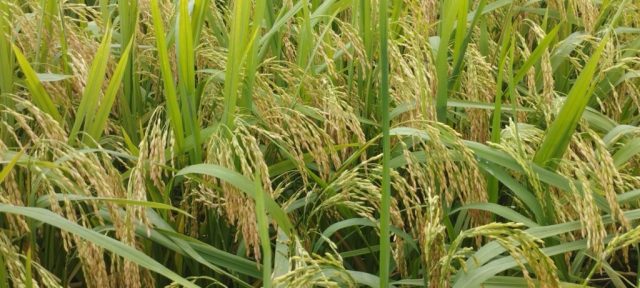Wild ancestors may hold the key to more nutritious rice grains
- From
-
Published on
22.09.25
- Impact Area

By Rhowell Tiozon and Glenn Concepcion
For the nearly 9,000 years since its domestication, rice has been selectively bred to feed a growing global population, becoming a staple food source that provides essential calories for billions. However, this long history of artificial selection has come at a cost. In prioritizing traits like higher yield and easier processing, humans have inadvertently stripped rice of many vital nutrients, leading to “hidden hunger,” a deficiency of vitamins and minerals affecting over three billion people worldwide. A new scientific review from researchers at the International Rice Research Institute (IRRI) and their collaborators reveals how the wild ancestors of rice could hold the key to restoring this lost nutritional value.
The review, co-authored by Rhowell Tiozon Jr., Sung-Ryul Kim, and Nese Sreenivasulu from IRRI’s Consumer-Driven Grain Quality and Nutrition unit, alongside Changquan Zhang and Qiaoquan Liu from Yangzhou University, and Alisdair Fernie from the Max Planck Institute of Molecular Plant Physiology, outlines how domestication altered rice’s genetic makeup. This evolutionary shift resulted in modern cultivated rice having a significantly higher starch content—up to 64% of its dry weight compared to 38% in wild varieties—but with reductions in essential proteins, fiber, minerals, and beneficial secondary metabolites like flavonoids. For example, the Rc gene, which governs red pericarp pigmentation and is associated with elevated antioxidant called catechin in wild rice, has been lost in most modern cultivated varieties. This loss has not only diminished the antioxidant and potential anti-cancer properties of the grain but also reduced its capacity to modulate glycemic index.
Related news
-

Positioning healthier rice varieties in Odisha for market demand and farmer income
International Rice Research Institute (IRRI)28.10.25-
Nutrition
-
Poverty reduction, livelihoods & jobs
In western Odisha, farmer groups and women’s self-help groups are taking the lead in bringing…
Read more -
-

SOILutions for Security: CGIAR at the 2025 Borlaug Dialogue
Multifunctional Landscapes Science Program22.10.25-
Biodiversity
-
Environmental health
-
Environmental health & biodiversity
-
Food security
-
Nutrition
From October 21–23, CGIAR will join global partners in Des Moines, Iowa for the 2025…
Read more -
-

New insights on how rainfall patterns influence arsenic in rice
International Rice Research Institute (IRRI)14.10.25-
Nutrition
By Bushra Humaira Sadaf Arsenic in rice has long been linked to contaminated irrigation water,…
Read more -
